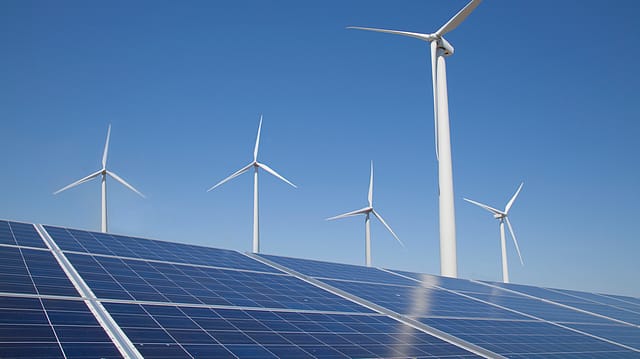India’s 500 GW renewable energy goal faces hurdles in financing, grid infra, policy execution
ADVERTISEMENT

India’s aggressive push towards renewable energy is encountering major hurdles, even as the country remains committed to achieving 500 gigawatts (GW) of renewable capacity by 2030. At the inaugural session of the India Energy Transition Summit by FICCI, policymakers and industry leaders outlined critical concerns surrounding energy security, financing, and grid infrastructure.
Union Minister for New & Renewable Energy, Prahlad Joshi, reaffirmed India’s commitment to its clean energy transition but stressed the urgency of execution. “Under the leadership of Prime Minister Narendra Modi, we are very serious about achieving 500 GW. This is not a slogan; it is a commitment,” he said. Joshi highlighted that India's installed renewable energy capacity had surged from 75 GW in 2014 to nearly 220 GW today, with solar power alone nearing 100 GW. Meanwhile, PM-Surya Ghar, has surpassed 850,000 rooftop installations, marking progress toward the goal of powering 10 million households with solar energy.
However, he acknowledged pressing challenges such as land acquisition, financing, and power purchase agreements (PPAs). “We are continuously meeting with state governments and stakeholders to resolve these issues. We will execute PPAs at the earliest,” he added.
Shivanand Nimbargi, chair of FICCI Renewable Energy CEOs Committee and CEO of Ayana Power, pointed to transmission bottlenecks as a major impediment to scaling up renewables. “We now have a clear plan for transmission capacities, but the industry still faces uncertainty in PPAs and regulatory approvals,” he said. Nimbargi also flagged the need for storage infrastructure to tackle grid stability issues caused by intermittent renewable energy supply. “Substation-based storage centres are necessary to handle current curtailments. We need clear bidding guidelines to attract investment in storage,” he added.
December 2025
The annual Fortune 500 India list, the definitive compendium of corporate performance, is out. This year, the cumulative revenue of the Fortune 500 India companies has breached $2 trillion for the first time. Plus, find out which are the Best B-schools in India.
The role of coal in India’s energy mix remained a contentious issue. M. Nagaraju, secretary, Department of Financial Services, Ministry of Finance, underscored coal’s continued relevance as a “transition fuel.” “Globally, gas has played the role of transition fuel, but India doesn’t have domestic gas resources. Given our coal reserves, we must focus on cleaner coal technologies while pushing renewables,” he opined. Nagaraju also stressed the financial burden of the energy transition, noting that an estimated ₹33 lakh crore would be required to meet the 500 GW target. “While ₹10 lakh crore will be sourced from public sector banks, the remaining ₹23 lakh crore must come through innovative financing instruments, including green bonds and structured debt solutions,” he said.
Industry leaders also raised concerns over policy execution and regulatory clarity. Nimbargi pointed out inconsistencies in land acquisition norms across states, with states like Rajasthan having streamlined approvals, while others impose stringent restrictions. “In Karnataka, we face a ceiling of 54 acres unless non-agricultural (NA) status is granted, slowing project timelines,” he explained.
The session also touched upon green hydrogen as a future growth area. Joshi highlighted India’s recent agreements for green hydrogen exports, emphasising that the country is positioning itself as a global leader. “The world expects India to be a manufacturing hub for green hydrogen. We are ensuring the right policies and investment climate for this,” he said.
Despite rapid progress, stakeholders agreed that policy stability and execution remain critical. Nagaraju called for a mindset shift in the private sector, urging greater R&D investment. “For too long, Indian businesses have neglected research as a core activity. This has to change if we are to lead in clean energy technologies,” he said.
With the government and private sector grappling with these issues, the path to 500 GW remains ambitious but fraught with challenges. As the energy landscape evolves, ensuring financial viability, regulatory clarity, and infrastructure expansion will be crucial to achieving India’s renewable energy goals.
